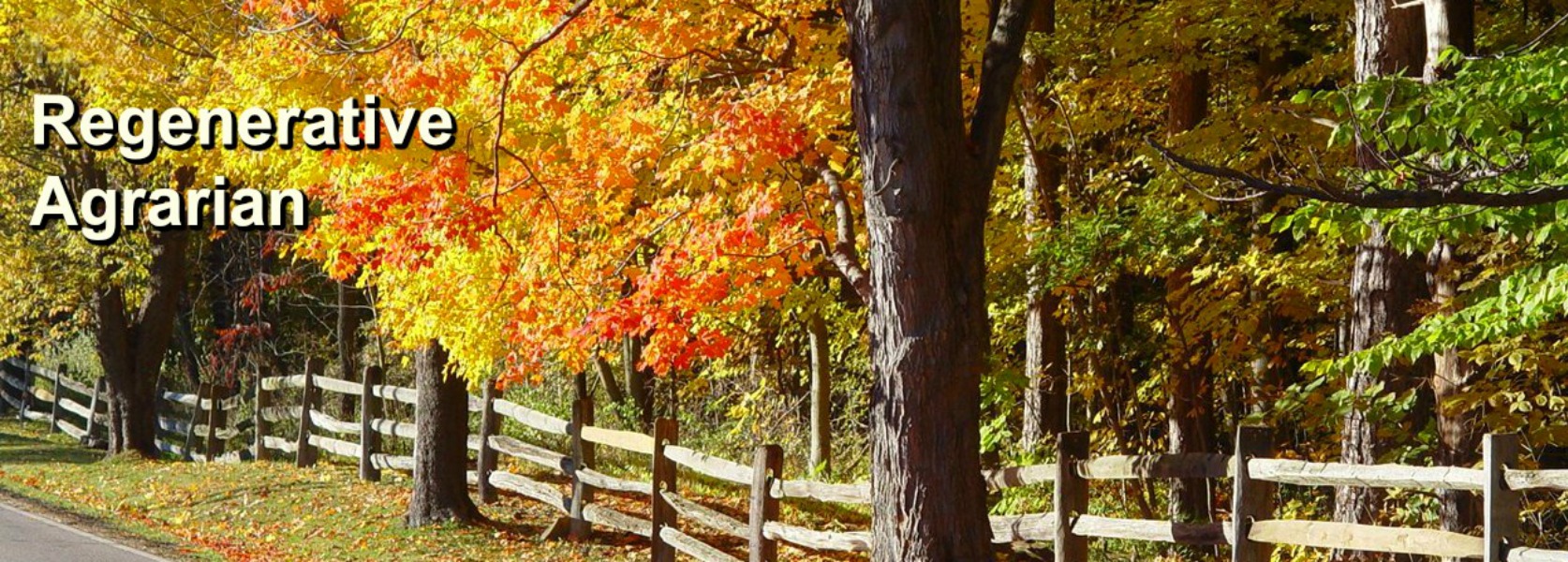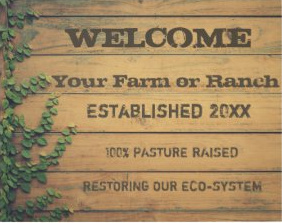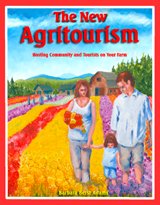Food garden planting day with Puget Sound American Indians
© National Lilac Publishing, LLC
American Indians (as these folks prefer to be called instead of Native Americans) of the Puget Sound area in the Pacific Northwest had so many wild food sources from the vast forests, seashores and the sea itself, that they didn’t need to develop much agriculture as compared to those of other North American locations.
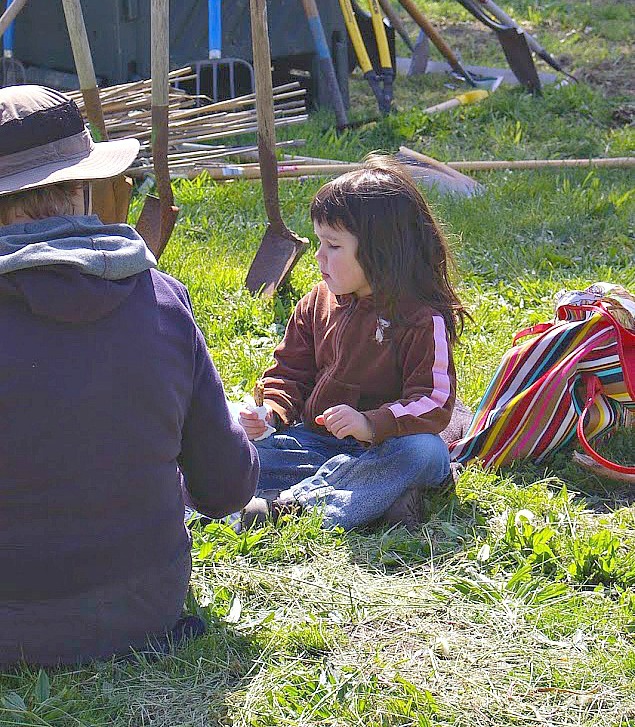 A tribal cutie hanging out with us as we plant the food garden
A tribal cutie hanging out with us as we plant the food gardenHowever, along with the forests, there were some natural sunny prairies and meadows where wild camas grew. The edible camas species, such as the blue camas, provided an onion-like tuber. Not tasty nor easily digestible raw, they would bake them in earthen ovens until the indigestible parts turned to fructose, and the resulting baked vegetable was not only relished, but was a very important food staple. However, they also often grew amidst death camas, which have been know to kill full grown cattle when grazed on. It can be hard to distinguish the blue and death camas tubers, but their flowers are different.
So, women
would weed the prairies and meadows of death camas while they were in
bloom and they could tell them apart. Then later in the season when the flowers
were gone and the tubers were at their best, they could be assured they
were gathering the safe tubors. In that sense, they were weeding as we
do in agriculture. Also, to keep wild bushes and larger forest plants
from encroaching, they would manage prescribed fires in the fields to
burn away unwanted plants and maintain conditions the camas loved. A way
of clearing wild ground for a chosen food crop as is done in
agriculture -- although far, far more in tune with nature than what much
of agriculture has devolved into.
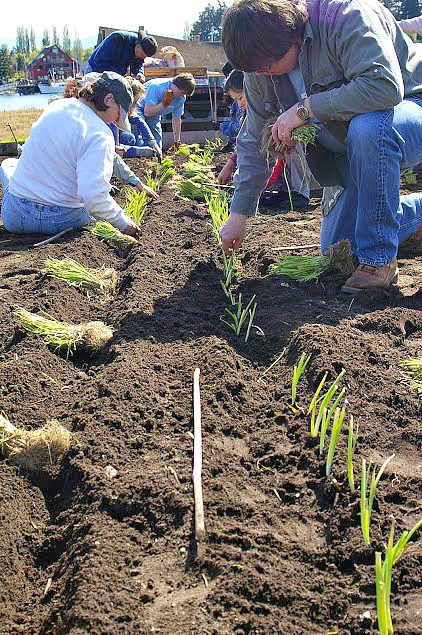 Stepping and sitting lightly for planting, avoiding heavy equipment on the crumbly garden soil.
Stepping and sitting lightly for planting, avoiding heavy equipment on the crumbly garden soil.Today, some of the Samish Nation people living on Fidalgo Island in Washington State have leap-frogged destructive agriculture that came after beautiful camas fields were plowed, and now embrace raised bed gardening as a way to sustainably produce plant food.
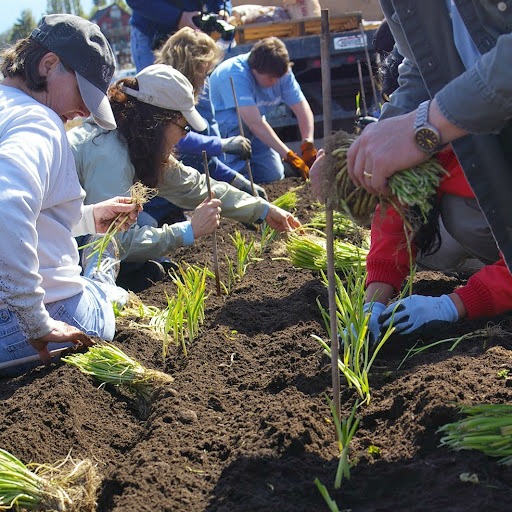 Planting alliums
Planting alliumsOn Earth Day, they invited people outside their tribe to join their people for a work party, dance, storytelling, and a celebration feast. The work parties included restoring native shoreline plants, and building and planting this raised bed garden. We planted alliums and other veggie starts.
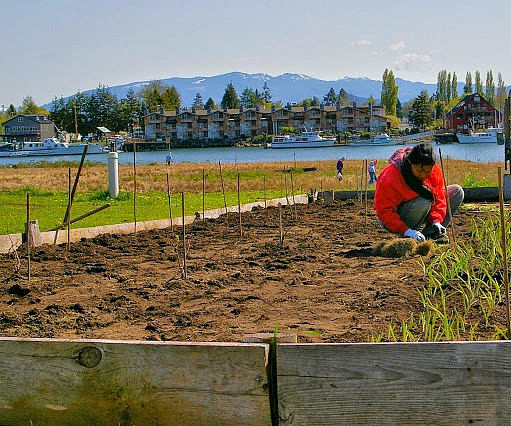 Raised bed food garden in foreground showing recently planted wide rows of alliums. In background, people are planting native plants along the shore. This land is on an island. Across the water is the mainland of Washington State and a fishing & tourist village. That land is also owned by and leased out (never sold) by this same American Indian tribe.
Raised bed food garden in foreground showing recently planted wide rows of alliums. In background, people are planting native plants along the shore. This land is on an island. Across the water is the mainland of Washington State and a fishing & tourist village. That land is also owned by and leased out (never sold) by this same American Indian tribe.We finished with a ceremony inside their longhouse. The lead storyteller, shown in the photo below, acknowledged those of European descent in the audience, saying that they honor our ancestors also, we’re their brothers and sisters, and that all ethnicities have histories of suffering at the hands of others. It made my heart open right up.
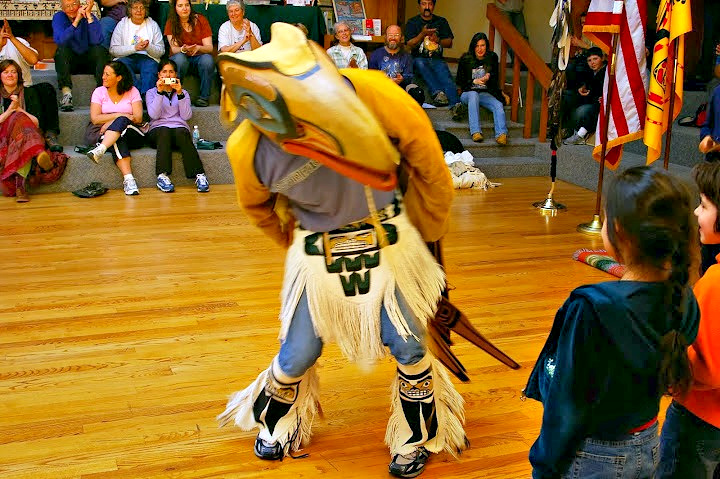
I was told for various reasons this gathering is at least temporarily on hold. But it was great to be part of the leadership of American Indians.

